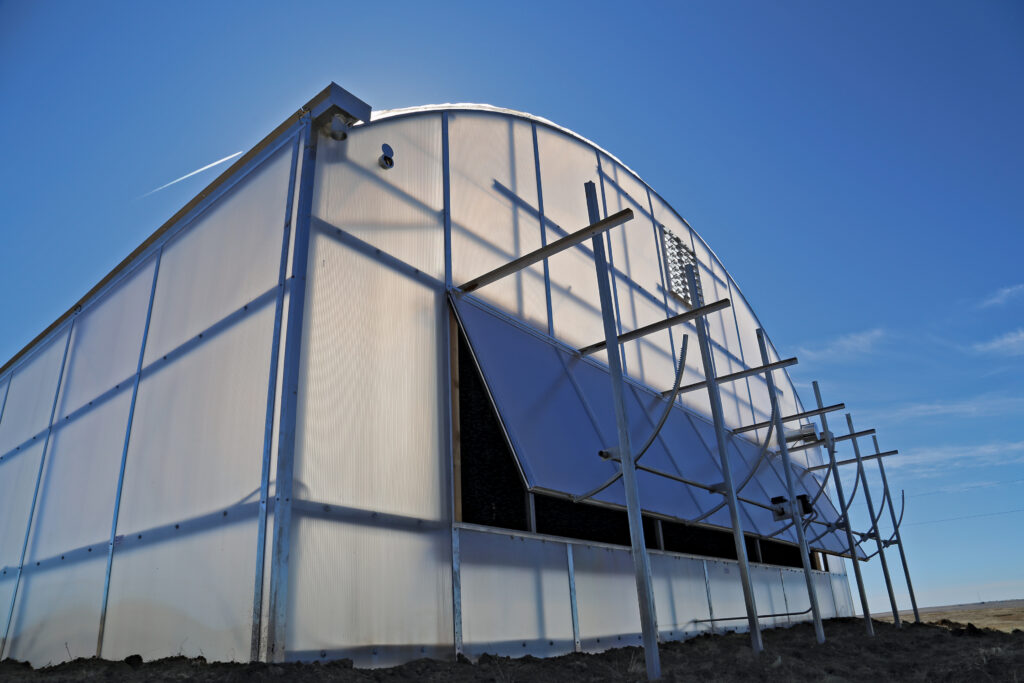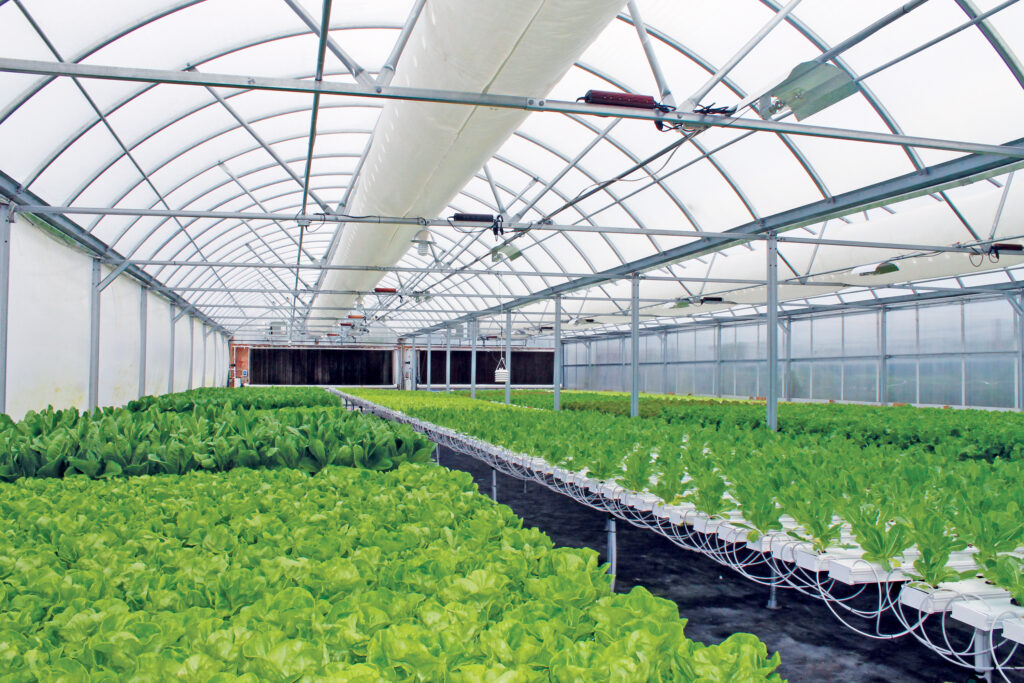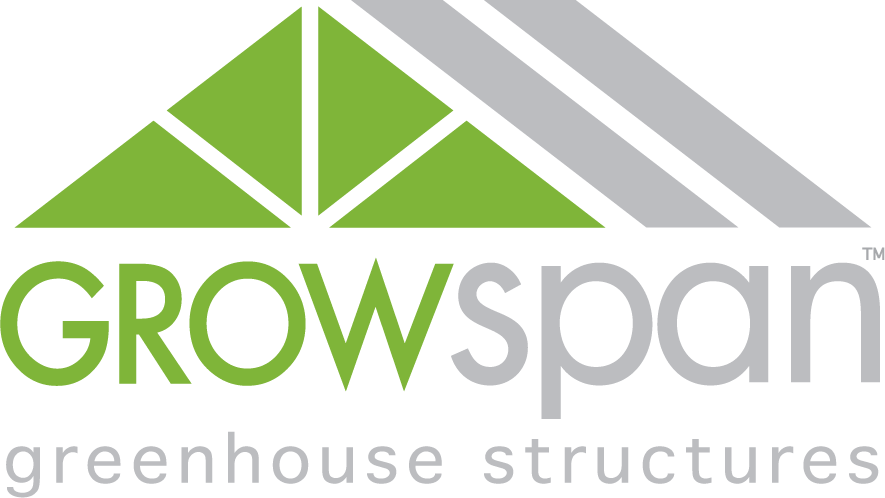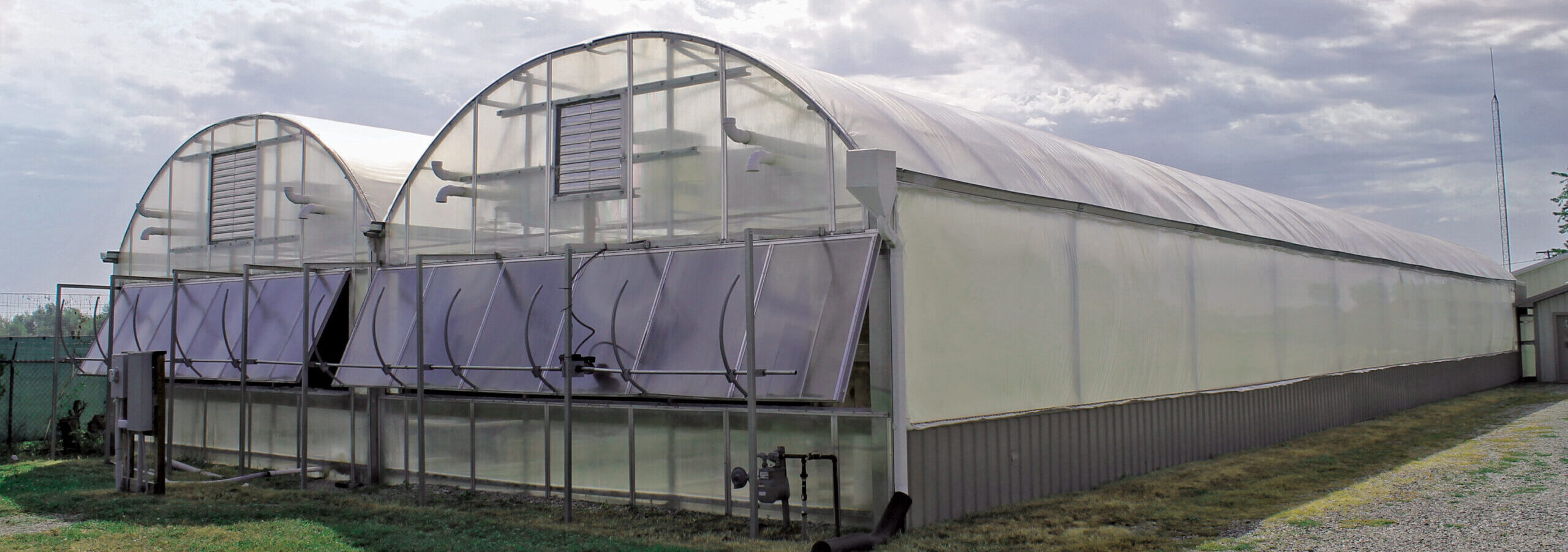A Climate Controlled Greenhouse Is The Ideal Setting For Controlled Environment Agriculture
Controlled environment agriculture will likely play a critical role in the future of crop production. Both commercially and locally, operations that use this growing strategy can produce crops year-round, while improving the quality and size of their harvests. By mitigating the risk of common outdoor threats, like severe weather, fluctuating temperatures, and pests and disease, controlled environment agriculture can also help growers get more crops to market consistently.
For many growers, a climate controlled greenhouse is the best setting to implement controlled environment agriculture. Greenhouses combine the benefits of a natural growing environment with the precision control of indoor production, using the best qualities of both growing methods to create superior crops. When growers employ a climate controlled greenhouse for controlled environment agriculture, they can give their business, and profits, the much needed boost they’re looking for.
WHAT ARE THE ADVANTAGES OF CONTROLLED ENVIRONMENT AGRICULTURE?
As a technology-based growing strategy, controlled environment agriculture takes a more modern approach to crop production.
Through this method, growers use an enclosed growing structure to create and customize ideal conditions for their crops. This allows them to produce crops of any kind throughout the entire year, regardless of the season or outdoor climate.
Even smaller, local growers can benefit from controlled environment agriculture. Since they can grow practically anything year-round, importing produce becomes cheaper for individual regions, and local growers get more business. With the rise in popularity of consuming locally grown crops, controlled environment agriculture can help even the smallest operations remain viable.

From a business standpoint, this production method is generally more efficient than outdoor farming as well. Outdoor agriculture demands more frequent manual labor and makes it harder to implement automation, which will likely be a key factor in keeping up with future food supply demands. Automated systems allow operations to streamline every aspect of their grow, improving efficiency and helping produce more frequent harvests.
HOW DO PLANTS GROW BETTER IN A GREENHOUSE?
There are a number of reasons growers should opt for a climate controlled greenhouse over an indoor facility. For starters, many crops benefit from improved growth in a greenhouse structure.
Lighting is a large factor in this. In a climate controlled greenhouse, crops grow primarily with the help of natural sunlight, which filters through a structure’s cladding. Natural sunlight is more efficient than artificial lighting for photosynthesis in crops, and indoor facilities rely almost entirely on artificial light fixtures.

With the right cladding, like twin-wall polycarbonate, operations can also obtain valuable light diffusion for their structure. Crops often grow better with diffused light because it disperses and reaches all around them to encourage uniform growth. With direct light, crops may not achieve the same consistent growth, and operations have to worry about light scorching the top of their crops, hindering their development.
A climate controlled greenhouse is also going to be more effective for humidity management. These temperature controlled structures typically feature naturally high roof peaks and roof vents that allow heat and moisture to escape.
Indoor facilities often have flat ceilings and insulated walls that keep moisture and heat trapped inside. These indoor farms rely on dehumidifiers to remove excess humidity, which can be effective, but can also raise an operation’s utility costs.
Without removing excessive humidity, enclosed structures can easily become a breeding ground for disease that damages crops. Disease is known to spread faster in an indoor facility than a climate controlled greenhouse.
These factors, combined with other elements of controlled environment agriculture, help greenhouse growers produce exceptional year-round harvests.
SEE HOW A GROWSPAN GREENHOUSE SUPPORTS CONTROLLED ENVIRONMENT AGRICULTURE
COST SAVINGS OF A CLIMATE CONTROLLED GREENHOUSE
While a climate controlled greenhouse helps growers produce superior harvests, it’s their cost-efficiency that truly makes them effective for controlled environment agriculture. A climate controlled greenhouse will let growers create a more viable operation that reduces long-term costs and improves their bottom line.
In general, a climate controlled greenhouse consumes far less energy than an indoor facility, while still achieving a similar end product. A primary advantage is the reduction in lighting costs, which usually generates one of the top expenses for operations who employ controlled environment agriculture.
Since greenhouses use natural light from the sun, growers don’t have to install extensive artificial lighting and run it throughout the day. Crops may need some form of supplemental lighting to help them reach their full potential, but by mostly using sunlight, growers can cut their operating costs significantly.
Cladding plays an important role in a structure’s cost-efficiency as well. The right cladding will provide a climate controlled greenhouse with a high R-value and excellent heat retention during the winter months. This helps maintain the interior greenhouse climate, preventing valuable heat from escaping and wasting electricity or gas.
When growers face higher levels of temperature and humidity, they will need to ensure their climate controlled greenhouse is set up with suitable ventilation. The best way to ensure this is to incorporate passive ventilation into a greenhouse’s design from the very beginning.
Passive ventilation is a cost-effective way for growers to maintain air circulation, without needing to run expensive ventilation equipment in their commercial greenhouse. With sufficient passive ventilation, even the smallest breeze will help carry hot air out of a structure and keep crops comfortable.
Controlled environment agriculture becomes far more efficient and cost-effective when growers implement automation. Automated systems give growers precision control over their entire operation, helping them reduce waste in factors like lighting, heating and irrigation.
Savings are even more prevalent when growers implement a smart controller for automation. A smart controller allows for complete influence over a grow, providing streamlined management over climate control systems. This also helps operations save on labor costs, because workers aren’t needed as often for tending to crops or equipment.
If growers are going to implement controlled environment agriculture in their operation, a climate controlled greenhouse provides the ultimate solution. Operations on any scale can create a controlled environment agriculture center to obtain high-quality harvests year-round, all while limiting their utility costs and increasing profits.
To see how a climate controlled greenhouse can help you take advantage of controlled environment agriculture, call or REQUEST A QUOTE today.
Related Articles
Preparing For The Cold: How To WInterize A Greenhouse
Many steps can be taken to prepare a greenhouse for the winter, including cleaning the greenhouse from top to bottom, testing systems’ functionality and ensuring a greenhouse is properly heated and insulated.
Humidity And Greenhouse Climate Control: A BRief Introduction
When growing in a greenhouse, humidity can become a serious factor in the success of your crop.
Greenhouse Temperature Control: The Guide To An Evaporative Cooling System
Also known as a commercial swamp cooler, an evaporative cooling system provides powerful cooling ability by employing natural scientific processes.
Automated Environmental Control
While managing the environment of a greenhouse can quickly turn into a time drain, one piece of equipment that customers often utilize automates environmental control, essentially eliminating the need for regular environmental oversight.

